Roofing Companies Sierra Vista Southeast
Top 10 Roofing Contractor in Sierra Vista Southeast
Receive up to 3 Roofing Company quotes for your project today! Compare profiles, reviews, accreditations, portfolio, etc... and choose the best service.
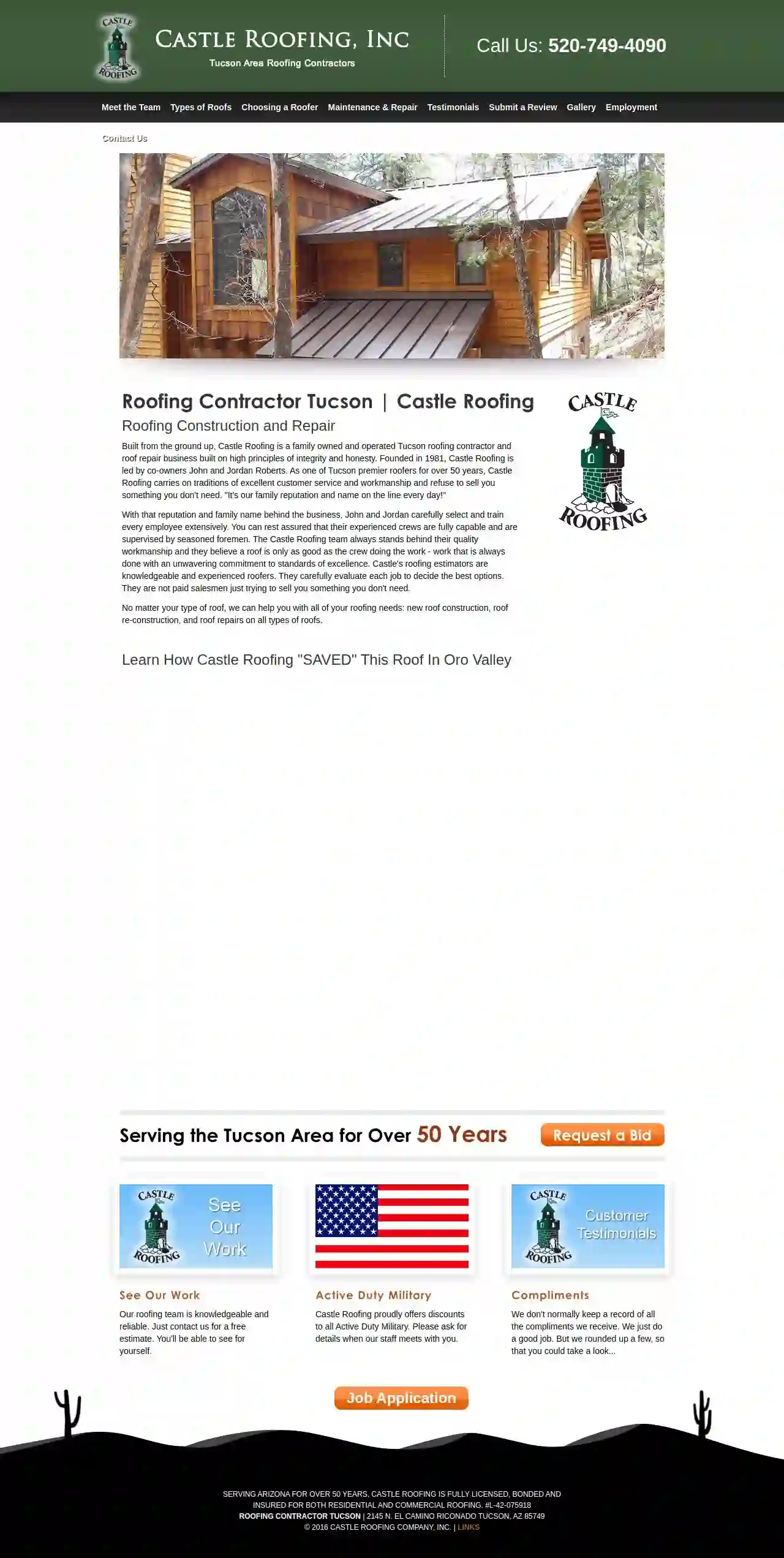
Castle Roofing Inc
4.240 reviews2145 N. El Camino Riconado, Tucson, 85749, USBuilt from the ground up, Castle Roofing is a family owned and operated Tucson roofing contractor and roof repair business built on high principles of integrity and honesty. Founded in 1981, Castle Roofing is led by co-owners John and Jordan Roberts. As one of Tucson's premier roofers for over 50 years, Castle Roofing carries on traditions of excellent customer service and workmanship and refuse to sell you something you don't need. "It's our family reputation and name on the line every day!" With that reputation and family name behind the business, John and Jordan carefully select and train every employee extensively. You can rest assured that their experienced crews are fully capable and are supervised by seasoned foremen. The Castle Roofing team always stands behind their quality workmanship and they believe a roof is only as good as the crew doing the work - work that is always done with an unwavering commitment to standards of excellence. Castle's roofing estimators are knowledgeable and experienced roofers. They carefully evaluate each job to decide the best options. They are not paid salesmen just trying to sell you something you don't need. No matter your type of roof, we can help you with all of your roofing needs: new roof construction, roof re-construction, and roof repairs on all types of roofs. Serving the Tucson area for over 30 years Request a bid Serving the Tucson Area for Over 50 Years Request a Bid See Our Work Our roofing team is knowledgeable and reliable. Just contact us for a free estimate. You'll be able to see for yourself. Active Duty Military Castle Roofing proudly offers discounts to all Active Duty Military. Please ask for details when our staff meets with you. Compliments We don't normally keep a record of all the compliments we receive. We just do a good job. But we rounded up a few, so that you could take a look... Job Application Serving Arizona for over 50 years, Castle Roofing is fully licensed, bonded and insured for both residential and commercial roofing. #L-42-075918 Roofing Contractor Tucson | 2145 N. El Camino Riconado Tucson, AZ 85749 © 2016 Castle Roofing Company, Inc. | Links
- Services
- Why Us?
- Our Team
- Gallery
Get Quote
TJ Roth Roofing & Construction
58 reviews10464 E Cholla St, Scottsdale, 85259, USTJ Roth Roofing & Construction is the premier Roofing company in Scottsdale and across The Valley. We have been in business over 40 years and provide professional quality roofing solutions. What keeps so many home and business owners coming back to us, referring our roofing company in Scottsdale to their family and co-workers? As a roofing contractor that offers excellence in residential and commercial roofing for the Scottsdale area, we have years of experience in roof repair, roof replacement, roof insurance claims assistance, and new roof construction installation, and much more! No matter what your needs; when you need a turn-key residential roofing company in AZ that exceeds expectations and always delivers on time, call us! We also provide no risk, no obligation, free roof inspections! One of the many reasons we are a trusted contractor in Scottsdale is because we offer affordable roofing and home services. Other roofing companies may give you a fast and dirty roofing estimate that is sometimes not what the end bill reflects (typically the end bill is higher), quote you a suspiciously low price, tell you that they do good work, then disappear after everything is done! TJ Roth Roofing by comparison, will stick to our estimate no matter what which is a competitive rate but not a “low ball” quote just to earn your business. From annual scheduled roof maintenance, to roof installation and beyond, We offer a 100% satisfaction guarantee and a full warranty on everything we do! We are never satisfied just being just a local roofer in Scottsdale; we strive to be the best local roofing company in Arizona! Call us today to speak with the local roofer and home services expert!
- Services
- Why Us?
- Our Team
- Gallery
Get Quote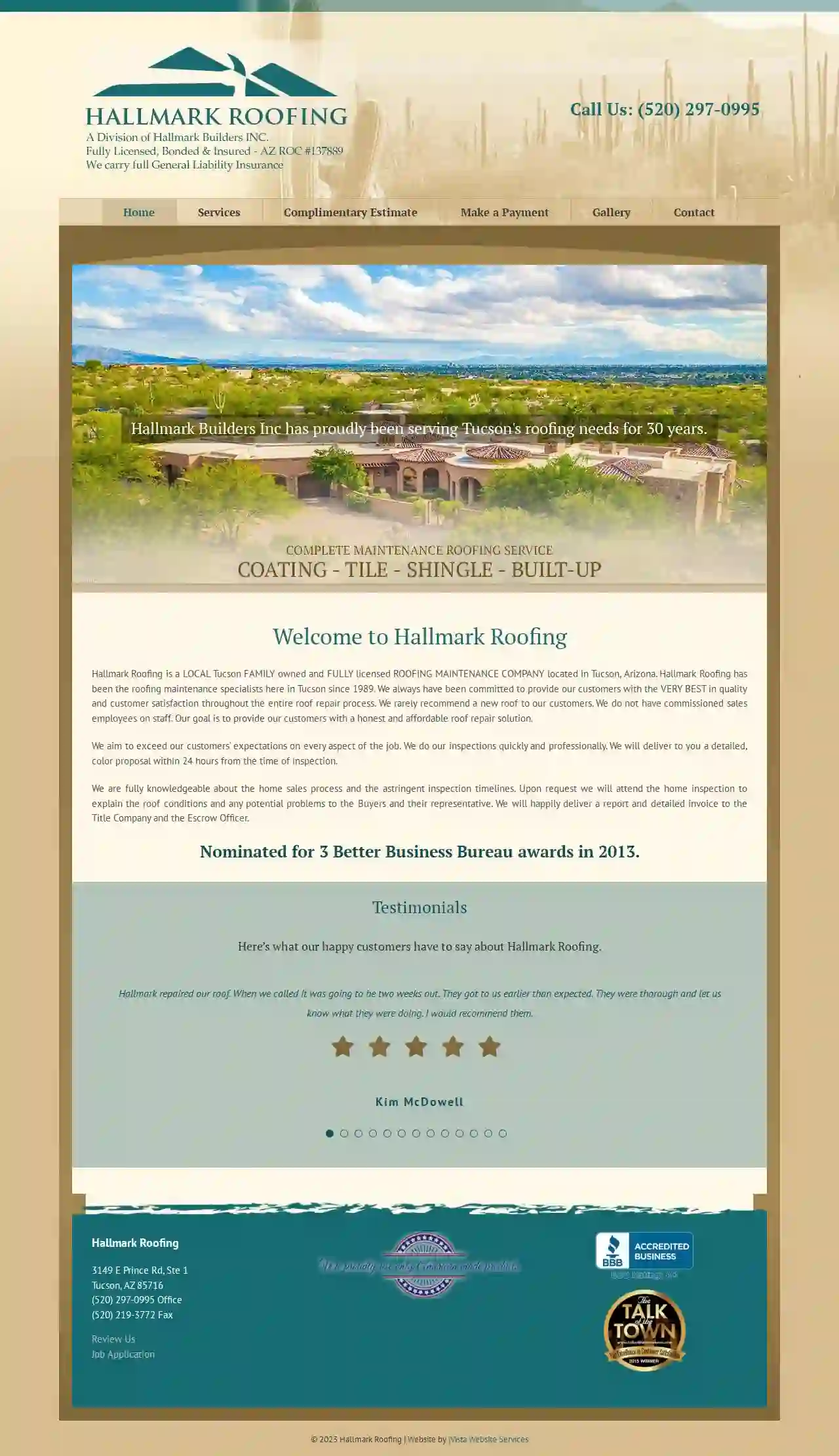
Hallmark Roofing
4.4128 reviews3149 E Prince Rd, Ste 1, Tucson, 85716, USHallmark Builders Inc has proudly been serving Tucson's roofing needs for 30 years. Now servicing Green Valley and Sahuarita. Call (520) 297-0995 for information! Welcome to Hallmark Roofing Hallmark Roofing is a LOCAL Tucson FAMILY owned and FULLY licensed ROOFING MAINTENANCE COMPANY located in Tucson, Arizona. Hallmark Roofing has been the roofing maintenance specialists here in Tucson since 1989. We always have been committed to provide our customers with the VERY BEST in quality and customer satisfaction throughout the entire roof repair process. We rarely recommend a new roof to our customers. We do not have commissioned sales employees on staff. Our goal is to provide our customers with a honest and affordable roof repair solution. We aim to exceed our customers’ expectations on every aspect of the job. We do our inspections quickly and professionally. We will deliver to you a detailed, color proposal within 24 hours from the time of inspection. We are fully knowledgeable about the home sales process and the astringent inspection timelines. Upon request we will attend the home inspection to explain the roof conditions and any potential problems to the Buyers and their representative. We will happily deliver a report and detailed invoice to the Title Company and the Escrow Officer.
- Services
- Why Us?
- Accreditations
- Our Team
- Testimonials
- Gallery
Get Quote
Independence Roofing
566 reviewsTempe, AZ, USAt Independence Roofing, we're proud to be the roofing experts in Tempe, AZ. We are licensed, bonded, and insured for your peace of mind. We offer a 15-year workmanship warranty that ensures that you’ll be happy with your roof for years to come. Our wide range of services includes tile roofing, shingles, flat roof services, elastomeric coating, foam roofing, and more! We can help you find the right solution for your home or business. Moreover, we guarantee we’re the lowest quote on any full shingle or tile roof replacement. We help you keep your property in good condition. A new roof is one of the best investments you can make for your home. It’s an investment in protection, security, and value. But if you’re looking to get the most out of that investment, you need to find a company you can trust to do the job right—and that’s where we come in.
- Services
- Why Us?
- Gallery
Get Quote
Five Star Roofing Company - Vermont
4.812 reviewsShelburne, VT, 05482, USFive Star Roofing Company is a dedicated roof contractor serving New York and Vermont. We pride ourselves on providing expert roofing advice and services with a team of professionals you can trust. We go beyond simply being a contractor; we aim to be your trusted partner in all your roofing needs. Our commitment to excellence is reflected in our core values: integrity and honesty, accountability and responsibility, motivation, and professionalism. We strive to deliver outstanding roofing services through professionalism, consistency, integrity, and responsiveness to our customers. We stay at the forefront of the industry by continuously updating our knowledge of the latest technologies and equipment, adhering to the highest standards of business integrity by following NRCA best practices guidelines. At Five Star Roofing, we offer a comprehensive range of services, including new roof construction, roof repair, and replacement. We understand that accidents can happen, which is why we are fully insured to provide peace of mind. We also stand behind our workmanship with a lifetime warranty. Need financing? We offer 100% financing options to make your roofing project more accessible. Our dedicated support team is always ready to respond quickly to your inquiries. We believe in clear communication and strive to make the entire process as smooth and stress-free as possible.
- Services
- Why Us?
- Accreditations
- Gallery
Get Quote
DesertView Roofing
4.336 reviewsTucson, AZ, 2610 East Broadway Boulevard, 85716, USDesertView Roofing is a family owned and operated business serving all of Tucson and surrounding areas of all residential and commercial roofing. We offer a second to none free estimate and inspection program with complete photos of your roof and complete estimate or invoice paperwork within 48 hrs. We are properly licensed and insured for all customer peace of mind. We specialize in water proofing all types of roofing systems from flat roof built up roofs (BUR) maintenance and acrylic elastic roof coatings, repairs, all mechanical replacements, fascia board replacements and repairs, All shingle and tile roof systems and repairs, gutter and downspout replacements, metal roof systems and repairs, immediate emergency after storm damage repairs or any roofing needs you may come across. We provide superb on-site supervision at all times, and a great safety program all employees must complete before hire. DesertView Roofing offers fantastic discounts for all military, seniors citizens, and realtors/ brokers and welcomes all to ask about our references!Schedule a Free EstimateAll estimates are 100% free and flexible according to materials and scheduling.
- Services
- Why Us?
- Our Team
- Gallery
Get Quote
Canyon State Roofing & Consulting
569 reviews4809 E Thistle Landing Dr, #100, Phoenix, 85044, USCanyon State Roofing & Consulting is a reputable roofing company based in Phoenix, Arizona. With years of experience in the industry, we provide top-notch roofing services to residential and commercial clients. Our team of experts is dedicated to delivering exceptional results, ensuring customer satisfaction, and building long-term relationships. We are fully accredited, bonded, and insured, with a license number of ROC #276078. Contact us today to schedule a consultation and learn more about our services.
- Services
- Why Us?
- Accreditations
- Gallery
Get Quote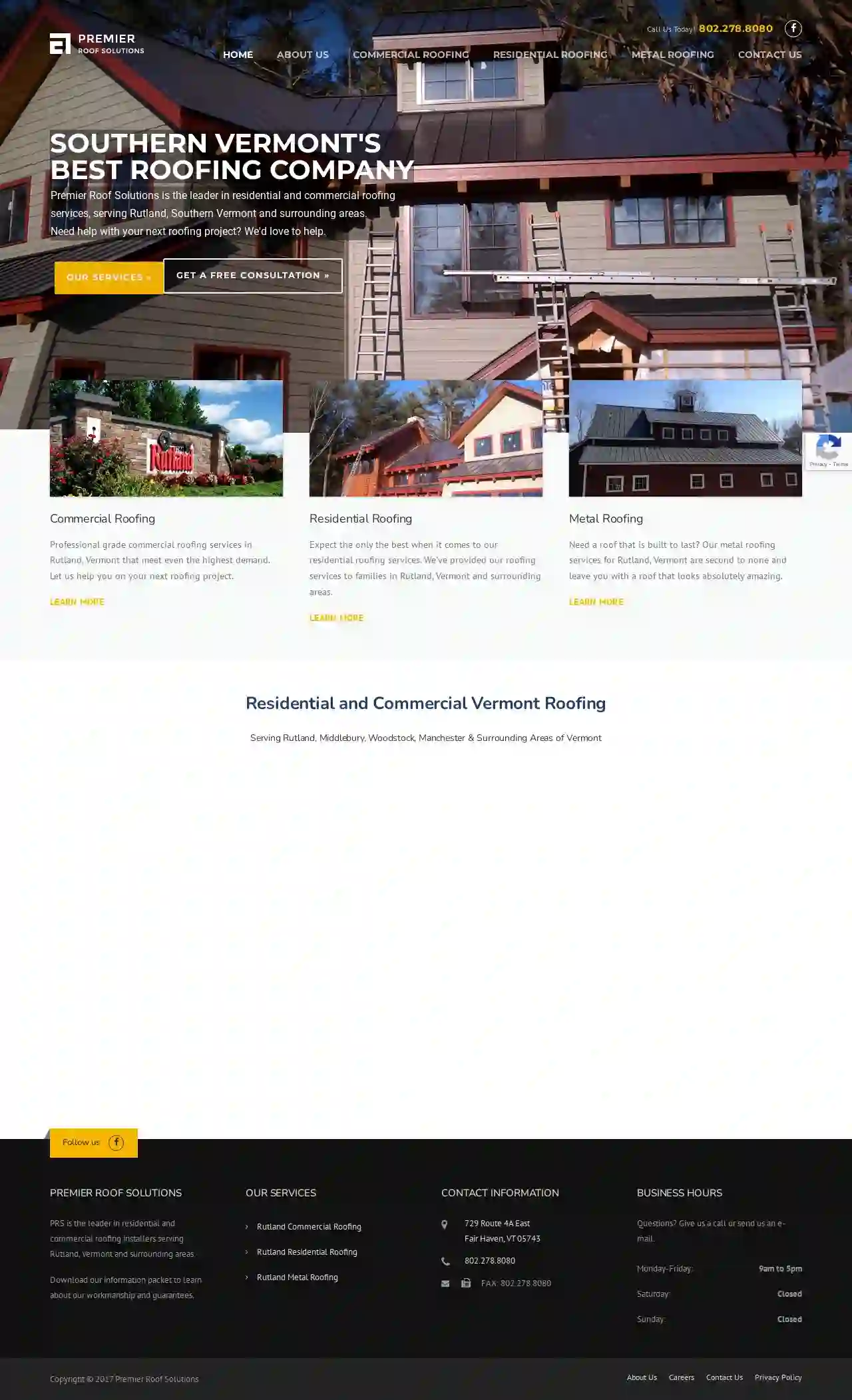
Premier Roof Solutions
3.79 reviewsFair Haven, VT, 4 West Street, 05743, USPremier Roof Solutions is the leader in residential and commercial roofing services, serving Rutland, Southern Vermont and surrounding areas. We've Been Doing Commercial and Residential Roofing Since 1989. Learn How We Can Help.
- Services
- Why Us?
- Gallery
Get Quote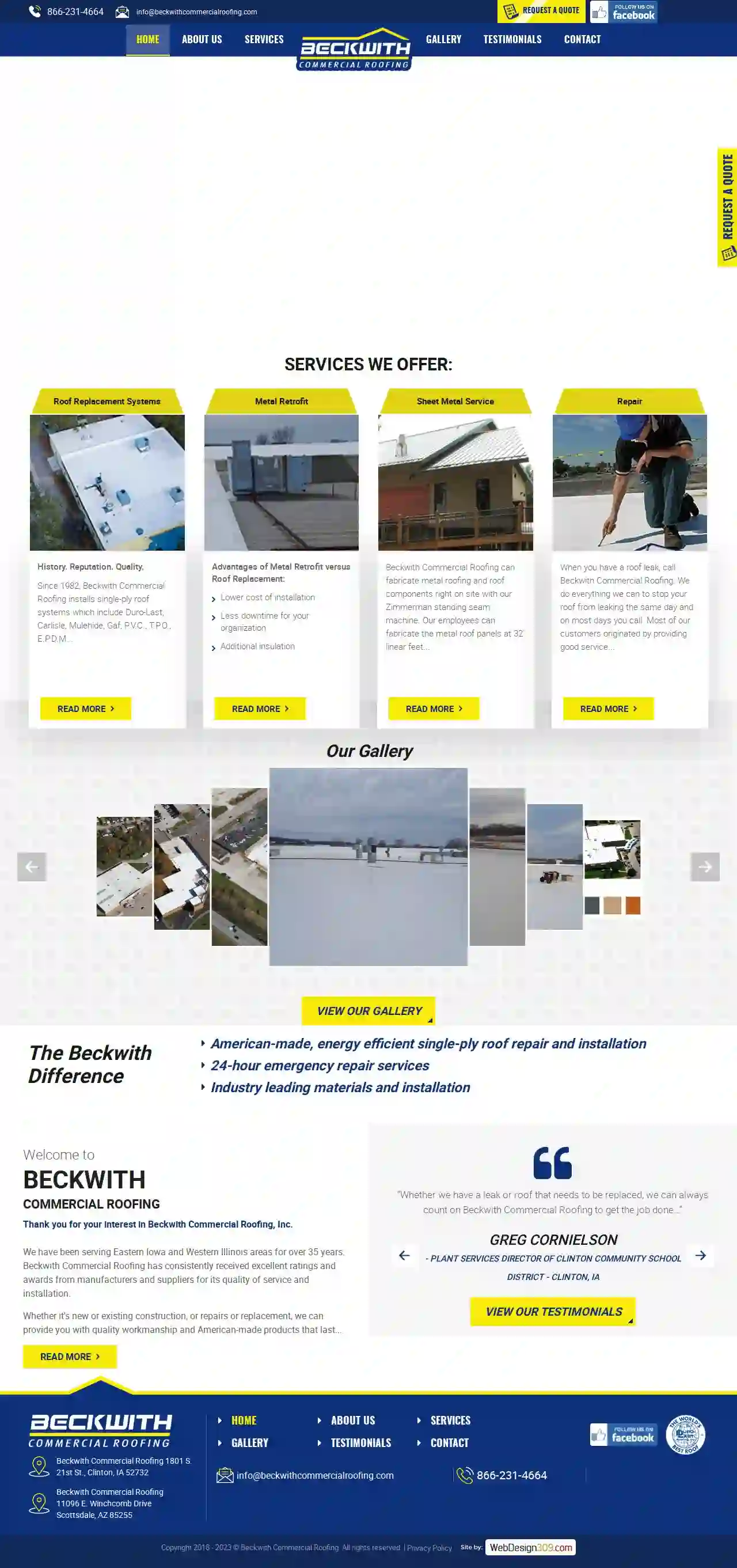
Beckwith Commercial Roofing
51 reviews1801 S. 21st St., Clinton, 52732, USWelcome to Beckwith Commercial Roofing, Inc. We have been serving Eastern Iowa and Western Illinois areas for over 35 years. Beckwith Commercial Roofing has consistently received excellent ratings and awards from manufacturers and suppliers for its quality of service and installation. Whether it's new or existing construction, or repairs or replacement, we can provide you with quality workmanship and American-made products that last.
- Services
- Why Us?
- Accreditations
- Testimonials
- Gallery
Get Quote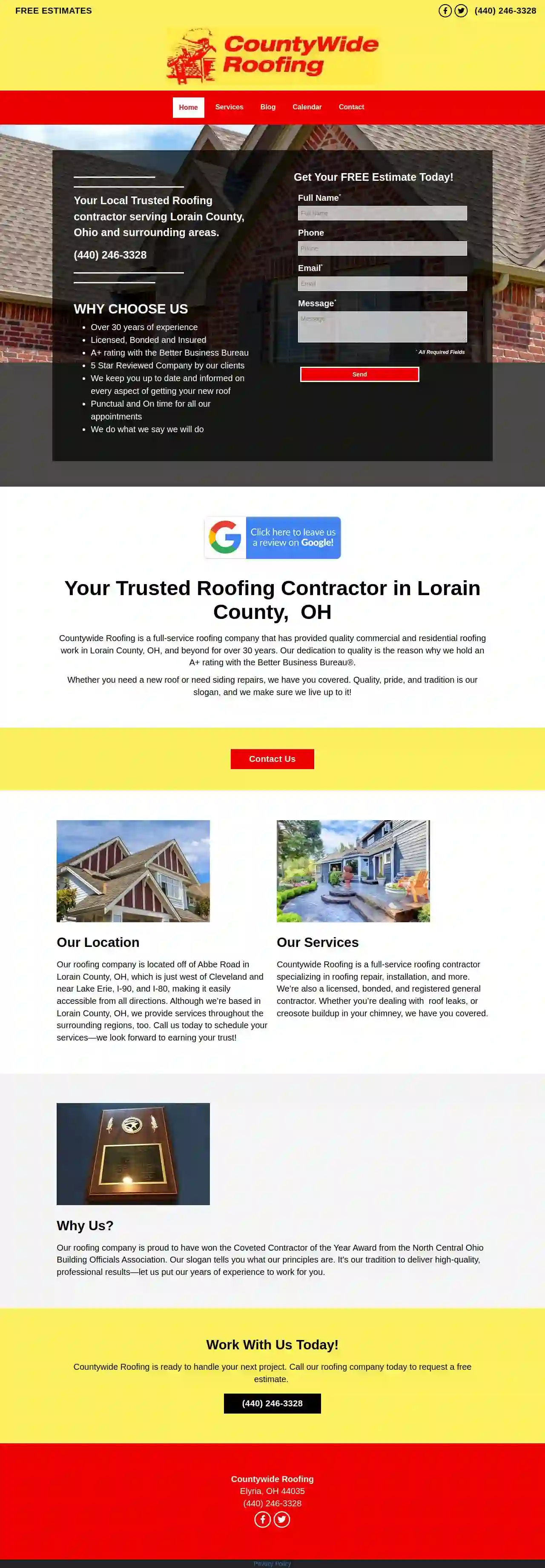
Countywide Roofing
4.610 reviewsCountywide Roofing, Elyria, OH, 44035, USCountywide Roofing is a full-service roofing company that has provided quality commercial and residential roofing work in Lorain County, OH, and beyond for over 30 years. Our dedication to quality is the reason why we hold an A+ rating with the Better Business Bureau. Whether you need a new roof or need siding repairs, we have you covered. Quality, pride, and tradition is our slogan, and we make sure we live up to it! Our roofing company is located off of Abbe Road in Lorain County, OH, which is just west of Cleveland and near Lake Erie, I-90, and I-80, making it easily accessible from all directions. Although we’re based in Lorain County, OH, we provide services throughout the surrounding regions, too. Call us today to schedule your services—we look forward to earning your trust!
- Services
- Why Us?
- Accreditations
- Gallery
Get Quote
Over 17,196+ Roofing Companies on our directory
Our roofing experts operate in Sierra Vista Southeast & surrounding areas!
Roofyng.com has curated and vetted the Best Roofing Businesses arround Sierra Vista Southeast. Find a top & reliable business today.
Frequently Asked Questions About Roofing Companies
- Ventilation: Soffit vents provide intake ventilation, allowing fresh air to enter the attic and regulate temperature and moisture.
- Aesthetics: It creates a finished look to the roof's underside.
- Pest Control: A properly sealed soffit prevents pests like birds and squirrels from nesting in the attic.
- Roof size and complexity
- Roofing material chosen
- Local labor costs
- Accessibility of the roof
- Removal of existing roofing
- Additional features (skylights, chimneys, etc.)
What is a soffit, and why is it important for my roof?
What is fascia, and why is it important?
How often should I clean my gutters?
How much does a new roof cost in the USA?
What is a soffit, and why is it important for my roof?
- Ventilation: Soffit vents provide intake ventilation, allowing fresh air to enter the attic and regulate temperature and moisture.
- Aesthetics: It creates a finished look to the roof's underside.
- Pest Control: A properly sealed soffit prevents pests like birds and squirrels from nesting in the attic.
What is fascia, and why is it important?
How often should I clean my gutters?
How much does a new roof cost in the USA?
- Roof size and complexity
- Roofing material chosen
- Local labor costs
- Accessibility of the roof
- Removal of existing roofing
- Additional features (skylights, chimneys, etc.)